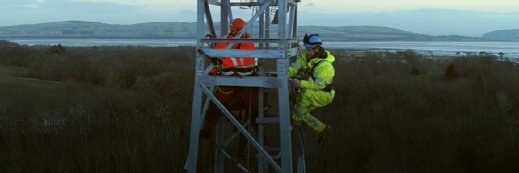
salita2010 - stock.adobe.com
O2 goes O-RAN to improve network service
Telefónica UK subsidiary announces open radio access network project to help customers better utilise its network, addressing issues such as densification of coverage and enabling faster uptake of 5G-based services in autonomous vehicles
As part of a mission to enhance network service for customers in the UK, particularly those in hard-to-reach rural areas and dense urban hubs, mobile network operator O2 has announced that it is to begin using open radio access network (O-RAN) technology across its infrastructure.
O-RAN is an open and software-defined network technology that has the potential to enable operators to broaden their number of network infrastructure partners to facilitate a better and more cost-effective network service for customers.
The operator regards such capability as particularly useful for coverage in hard-to-reach rural locations, such as an area with a very small population, or where a sharing model is more cost-effective, such as dense urban locations where large numbers of small cells are required.
Furthermore, cost-optimised O-RAN technology allows greater capacity and simpler configuration, which can potentially benefit users.
In the project, O2 is working with a number of partners, including Mavenir, DenseAir and WaveMobile, to introduce O-RAN solutions that it claims will no less than “redefine” mobile network economics. The company expects commercial deployment of O-RAN to pick up pace over the next 18-24 months.
With Mavenir, O2 is looking at coverage and capacity in high-density environments in London, aiming to provide enhanced mobile connectivity and better customer experience where customers need it most, in locations ranging from stadiums to shopping centres.
WaveMobile has a current O-RAN network active on several sites across the UK and, with O2, is developing coverage solutions at places such as Woldingham, Surrey, carrying mobile traffic for the operator’s customers. O2 believes that in future this type of solution could be expanded to provide community-based mobile services in “notspots”.
O2 already works at the Millbrook Proving Ground, the UK’s leading vehicle proving location, as the public and private network provider of 5G connectivity for the testing and development of connected and automated vehicle (CAV) technology, and is working with DenseAir to deploy both 4G and 5G networks over an O-RAN solution.
DenseAir and technology partner Airspan Networks – the lead company in the AutoAir project to make 5G technologies available for the validation and development of autonomous vehicles – have built what the companies say is a unique hyper-dense pervasive 4G and 5G O-RAN-based solution with over 70 radio nodes, 19km of fibre and mmWave front haul to deliver network capacity at what they say is a scale never seen before at any proving ground, allowing the validation of future CAV use cases. O2’s neutral host network will support collaboration on trials and tests.
Commenting on what the operator aims to get out of the O-RAN project, O2 chief technology officer Brendan O’Reilly said: “Connectivity is a lifeline for consumers and businesses alike and we’re committed to delivering the best possible network experience for our customers. O-RAN represents a really exciting opportunity to deliver better coverage, in more places, more of the time. By opening up our radio access network to smaller vendors, and as we look towards wider adoption of 5G, O-RAN will be part of the solution to bring the latest connectivity to more people around the country.”
Read more about UK mobile coverage
- Extending full-fibre broadband and mobile network coverage are critical issues for a healthy UK economy – and a new prime minister must continue progress.
- Spry cancels out P&J Arena dead zones with multi-operator 4G coverage.
- Rural business association slams parties’ lack of plans to address “appalling” mobile connectivity.
- Country Land and Business Association urges government to consider broadband-style interventions to improve 4G mobile network coverage in rural areas.








